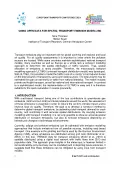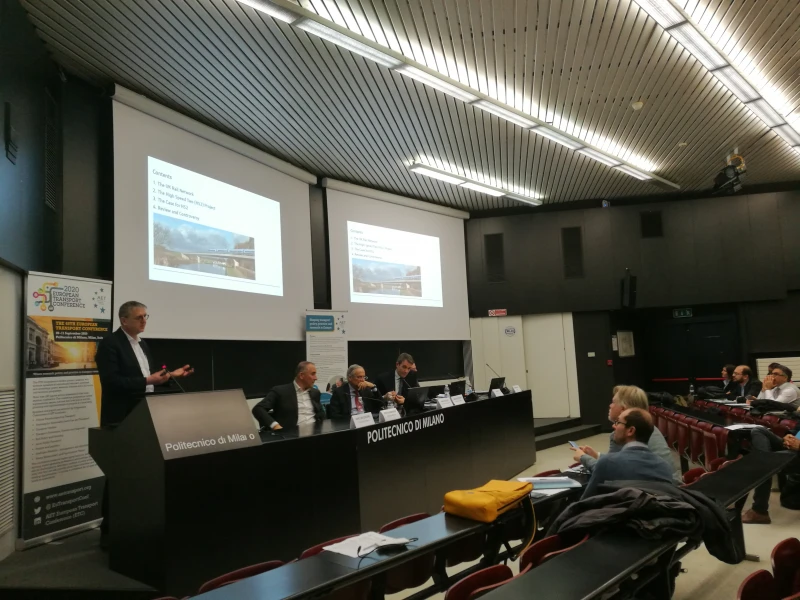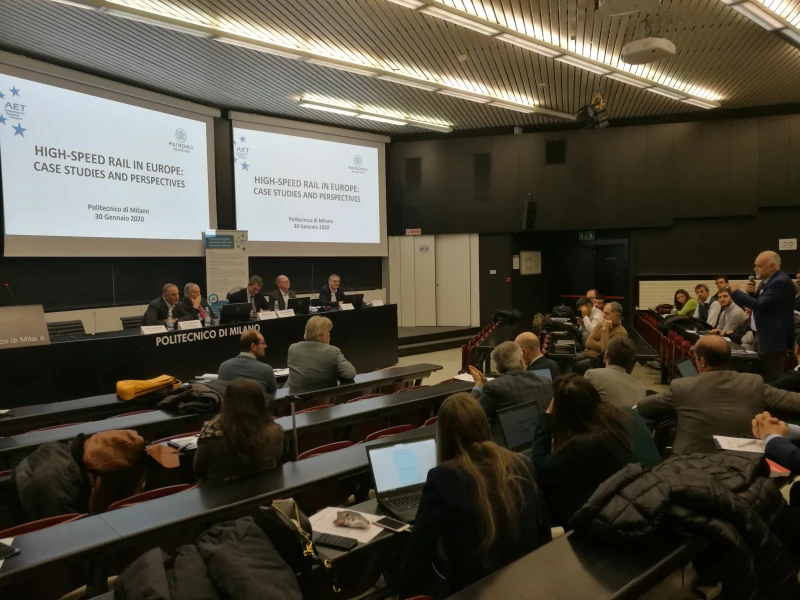-
Past ETC Papers

Browse, search and view papers from the past AET Conferences.
-
Members' Area

AET promotes networking and exchange of ideas, information and opportunities amongst members.
Conference Papers 2021
Online
ETC Conference Papers 2021
Using Open Data for Spatial Transport Emission Modelling
Seminar
Day 3 (15 Sep 2021), Session 8, ENVIRONMENT:MODELLING ELECTRIFICATION, EMISSIONS AND IMPACTS OF CLIMATE CHANGE, 13:00 - 15:00
Status
Accepted, documents submitted
Submitted by / Abstract owner
Nina Thomsen
Authors
Nina Thomsen
Stefan Seum
Short abstract
This paper describes ULTIMO, a transport model that can be set up for any European country using open data sources. With this model, road-based transport is distributed on the road network, enabling detailed determination of transport emissions.
Abstract
With road-based transport being one of the key contributors to greenhouse gas emissions and local pollutants around the world, the assessment of these emissions is essential in order to reduce the sector’s climate impact. Therefore, the total volume of transport can be projected for a country, which is used as the base for emission calculation. However, this method does not allow for spatial analyses within the country. This is where transport models play an important role, as they can deliver exact transport volumes on the road network. With ULTIMO (Universal Transport Distribution Model), the macroscopic model approach developed by the authors, it is possible to model the traffic loads of a country’s road network based on the total volume of transport by using open data sources.
ULTIMO was developed because national transport models do not exist for every country, and developing highly sophisticated models is a very time-consuming task. Furthermore, the current status quo distributes transport emissions without considering real transport movements, as mentioned above. With ULTIMO, it is possible to model these movements for countries with sufficient OSM data. The model includes private and freight transport, as well as national and international transport. In contrast to a sophisticated model, the implementation of ULTIMO is easy and it is therefore suitable for the quick calculation in coarse granularity. The main advantages are listed below.
• open data based: easily transferable to other countries and regions
• efficient and quick calculation
• longitudinal comparison
The model includes three steps of the traditional four step model: trip generation, trip distribution and assignment. The trip generation is based on the total national volume of transport and population data. For freight transport, OSM data on industrial land use is also included. The source values for transport volumes can be determined by national data (e.g. BMVI 2014) or other scenario projections (e.g. EC 2016, global projections currently under work by DLR like Seum & Eisenmann 2020). The trip distribution and assignment on the national level are carried out in two different ways for short and long distance. The long distance trips are distributed using a gravity model approach, which is a common practice in transport modelling (Ortúzar & Willumsen, 2011). The short distance trips are assigned to the road network nearby the location of origin, by setting load factors for different road types. The same approach is used for the international trips as well, which are split up between incoming and outgoing traffic from the country and transit trips. Future developments could include methods to determine the national totals within the model and add mode choice and other means of transport.
After the road-based transport was distributed and assigned, the emissions are calculated as the product of the load per link in the network and an emission factor (e.g. HBEFA, INFRAS 2019 or COPERT, emisia 2020). There are different factors depending on the road type of the link and whether it is in a settled area. It is possible to add further spatial characteristics to the links in order to use more differentiated emission factors.
As of now, ULTIMO was applied to calculate traffic loads and emissions for central Europe, yielding good results. Future applications include analyses in south east Asia and the calibration of the model for different world regions. Ultimately, ULTIMO should be applicable to all countries with sufficient OSM data, thus helping global research regarding the impact of transport emissions.
Acknowledgements:
The authors thank Gernot Liedtke for his expertise in freight transport and Lars Hedemann for his work on the personal transport model within ULTIMO.
Literature:
BMVI (2014), Verkehrsverflechtungsprognose 2030, https://www.bmvi.de/SharedDocs/DE/Anlage/G/verkehrsverflechtungsprognose-2030-schlussbericht-los-3.pdf?__blob=publicationFile
EC (2016), EU Reference Scenario 2016, Energy, transport and GHG emissions Trends do 2050, https://ec.europa.eu/energy/sites/ener/files/documents/20160713%20draft_publication_REF2016_v13.pdf
emisia (2020), COPERT 5 manual, https://copert.emisia.com/
INFRAS (2019) Handbook of Emission Factors for Road Transport HBEFA 4.1, https://www.hbefa.net/d/index.html
Ortúzar, Willumsen (2011), Modelling Transport, Wiley
Seum, Eisenmann (2020), Projecting Global Land-Base Transportation up to 2100, submitted to ETC 2020
Programme committee
Transport Models
Topic
The Climate Emergency
Documents:


Association For
European Transport
Forester House
Doctors Lane
Henley-in-Arden
Warwickshire, UK
B95 5AW
+44 (0) 15 64 793552
VAT number: 710 1866 64
Conference Supporters & Endorsers




Legal Entity
The Association for European Transport is registered as an Association ('vereniging') with the Chamber of Commerce for Haaglanden in The Netherlands under company number 27170096.
Built on Zenario




